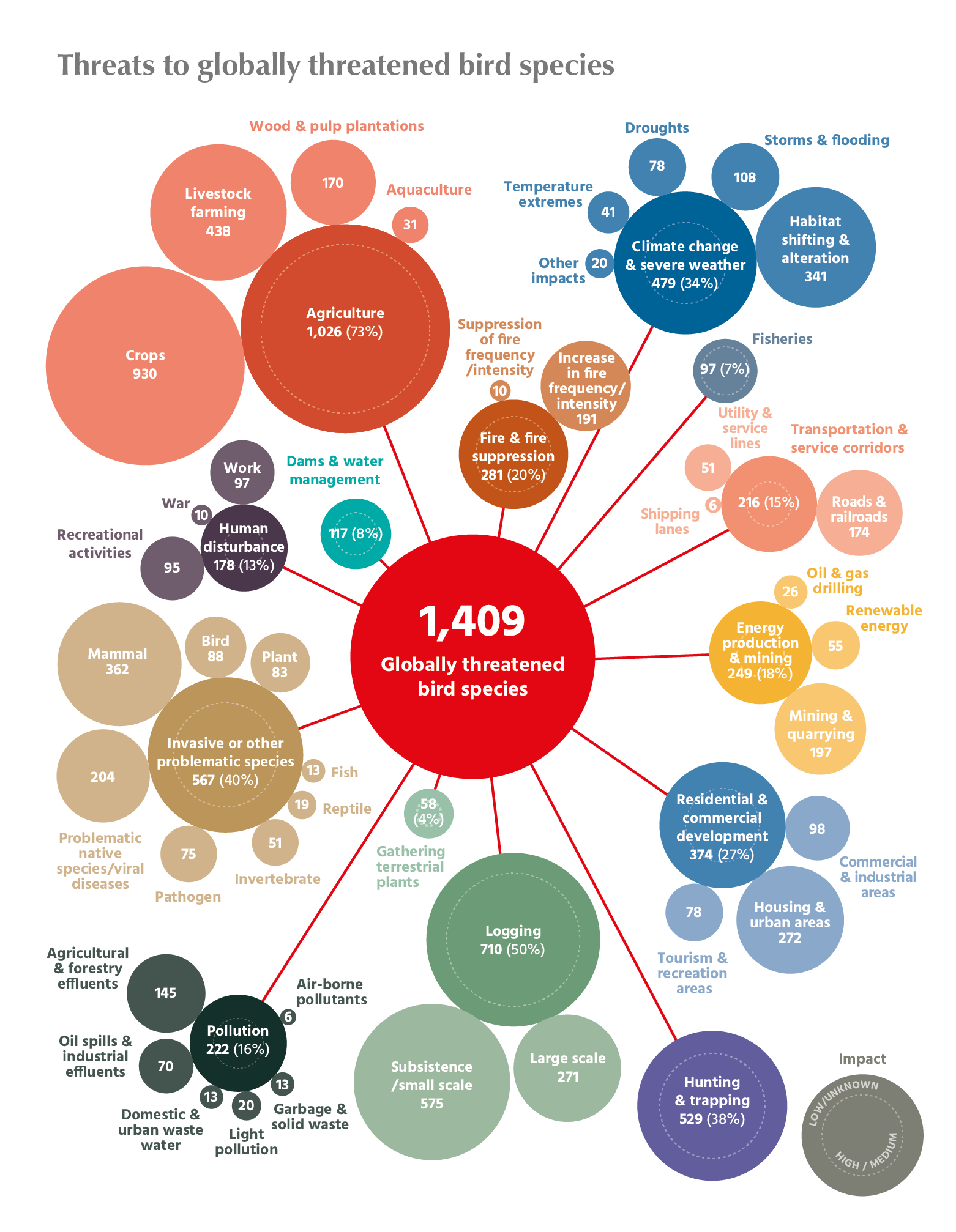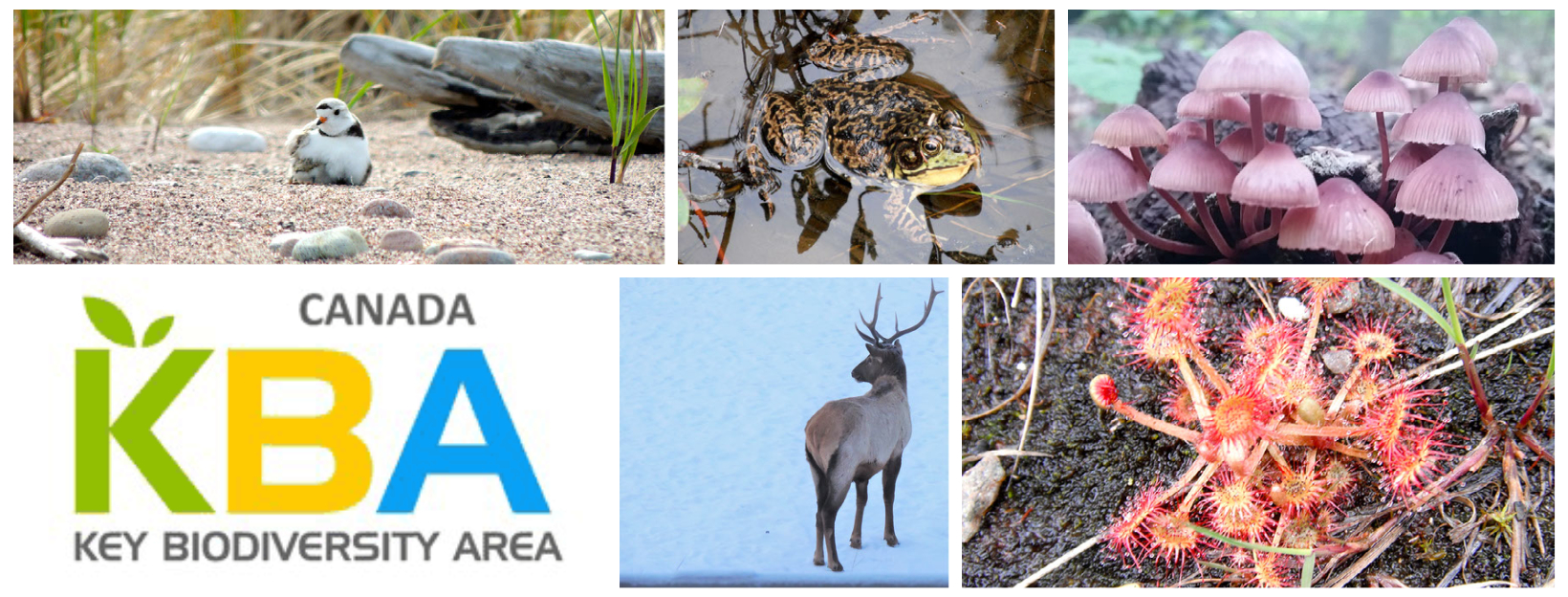The latest State of the World’s Birds report paints a concerning picture: Nearly half of all bird species were found to be in decline, and one in eight bird species is currently threatened with extinction.
Published every four years by BirdLife International, a global family of over 115 conservation partners including Birds Canada. The report summarises what birds tell us about the state of nature and the actions governments, organizations, and individuals can take to protect it.
In addition to showing the dramatic declines of bird populations globally, the report details what is driving these losses. For example:
- Agricultural expansion and intensification: the single biggest threat to the world’s birds, affecting 73% of all threatened species.
- Unsustainable logging and forest management: the loss of over 7 million hectares of forest each year is impacting half of all threatened bird species.
- Climate change: 34% of threatened species are already impacted and our changing climate is projected to rapidly become even more of an issue.

The State of the World’s Birds report concludes that one of the most urgent actions needed to address the biodiversity crisis is to effectively conserve and manage the most critical sites for birds and biodiversity. Over 13,600 Important Bird and Biodiversity Areas (IBAs) have been identified worldwide. IBAs form the core of a wider network of Key Biodiversity Areas (KBAs) and are increasingly being used to target the designation of protected areas. They will be particularly important for ensuring that efforts to expand protected areas to cover 30% of land and seas are targeted to the most important locations. Birds Canada co-leads the IBA program in Canada and is part of the team of organizations working collaboratively to identify Canada’s KBAs.

The report also highlights the importance of technological advances to our understanding of the state of the world’s birds, citing the Motus Wildlife Tracking System – a program of Birds Canada and our partners – as an example. The report further acknowledges the essential contributions of Citizen Scientists. Birds Canada volunteers who participate in breeding bird atlases, the Christmas Bird Count, and other programs, and who submit bird checklists to eBird Canada, can take pride in knowing their local efforts are used to assess the status of bird populations and inform conservation at the global scale.
Despite declines in many populations, birds provide us with reasons for hope. They show that with effective action, species can be saved and nature can recover. Since 2013, 726 globally threatened bird species have directly benefitted from actions of the BirdLife Partnership and over 450 Important Bird and Biodiversity Areas (IBAs) have been designated as protected areas through the advocacy efforts of BirdLife Partners.
“Our research shows that between 21 and 32 bird species would have gone extinct since 1993 without the conservation efforts undertaken to save them,” explains Dr. Stuart Butchart, Chief Scientist at BirdLife International. “Species like the Echo Parakeet, California Condor, Northern Bald Ibis, and Black Stilt would no longer exist outside museums were it not for the dedicated efforts of the many organisations in the BirdLife Partnership and beyond. If we give nature a chance, it can recover.”

